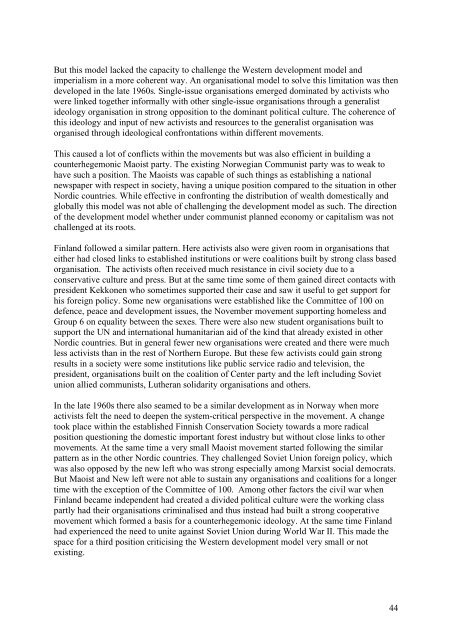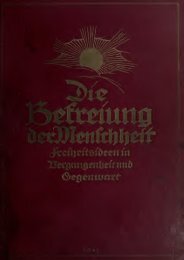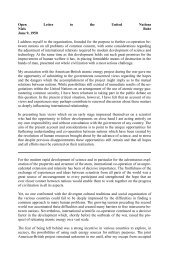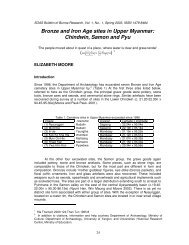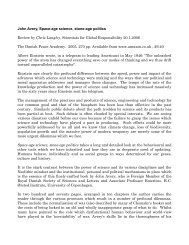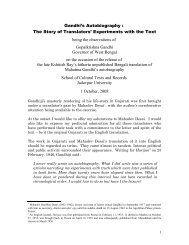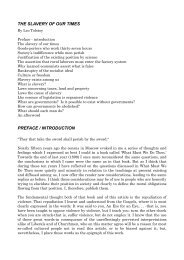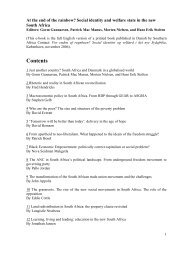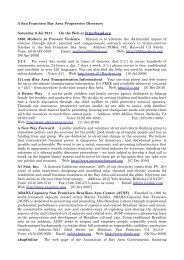Indian-Nordic Encounters 1917-2006 - Det danske Fredsakademi
Indian-Nordic Encounters 1917-2006 - Det danske Fredsakademi
Indian-Nordic Encounters 1917-2006 - Det danske Fredsakademi
You also want an ePaper? Increase the reach of your titles
YUMPU automatically turns print PDFs into web optimized ePapers that Google loves.
But this model lacked the capacity to challenge the Western development model and<br />
imperialism in a more coherent way. An organisational model to solve this limitation was then<br />
developed in the late 1960s. Single-issue organisations emerged dominated by activists who<br />
were linked together informally with other single-issue organisations through a generalist<br />
ideology organisation in strong opposition to the dominant political culture. The coherence of<br />
this ideology and input of new activists and resources to the generalist organisation was<br />
organised through ideological confrontations within different movements.<br />
This caused a lot of conflicts within the movements but was also efficient in building a<br />
counterhegemonic Maoist party. The existing Norwegian Communist party was to weak to<br />
have such a position. The Maoists was capable of such things as establishing a national<br />
newspaper with respect in society, having a unique position compared to the situation in other<br />
<strong>Nordic</strong> countries. While effective in confronting the distribution of wealth domestically and<br />
globally this model was not able of challenging the development model as such. The direction<br />
of the development model whether under communist planned economy or capitalism was not<br />
challenged at its roots.<br />
Finland followed a similar pattern. Here activists also were given room in organisations that<br />
either had closed links to established institutions or were coalitions built by strong class based<br />
organisation. The activists often received much resistance in civil society due to a<br />
conservative culture and press. But at the same time some of them gained direct contacts with<br />
president Kekkonen who sometimes supported their case and saw it useful to get support for<br />
his foreign policy. Some new organisations were established like the Committee of 100 on<br />
defence, peace and development issues, the November movement supporting homeless and<br />
Group 6 on equality between the sexes. There were also new student organisations built to<br />
support the UN and international humanitarian aid of the kind that already existed in other<br />
<strong>Nordic</strong> countries. But in general fewer new organisations were created and there were much<br />
less activists than in the rest of Northern Europe. But these few activists could gain strong<br />
results in a society were some institutions like public service radio and television, the<br />
president, organisations built on the coalition of Center party and the left including Soviet<br />
union allied communists, Lutheran solidarity organisations and others.<br />
In the late 1960s there also seamed to be a similar development as in Norway when more<br />
activists felt the need to deepen the system-critical perspective in the movement. A change<br />
took place within the established Finnish Conservation Society towards a more radical<br />
position questioning the domestic important forest industry but without close links to other<br />
movements. At the same time a very small Maoist movement started following the similar<br />
pattern as in the other <strong>Nordic</strong> countries. They challenged Soviet Union foreign policy, which<br />
was also opposed by the new left who was strong especially among Marxist social democrats.<br />
But Maoist and New left were not able to sustain any organisations and coalitions for a longer<br />
time with the exception of the Committee of 100. Among other factors the civil war when<br />
Finland became independent had created a divided political culture were the working class<br />
partly had their organisations criminalised and thus instead had built a strong cooperative<br />
movement which formed a basis for a counterhegemonic ideology. At the same time Finland<br />
had experienced the need to unite against Soviet Union during World War II. This made the<br />
space for a third position criticising the Western development model very small or not<br />
existing.<br />
44


